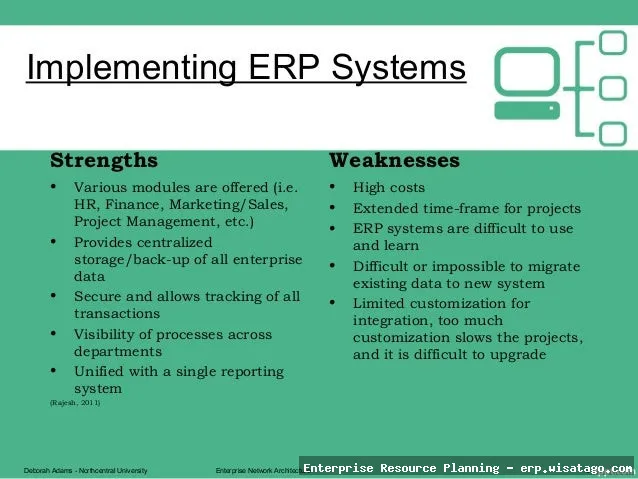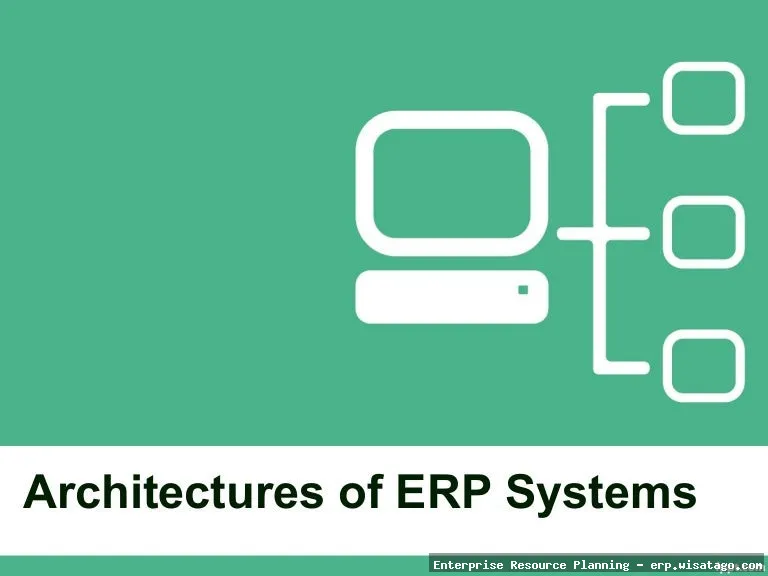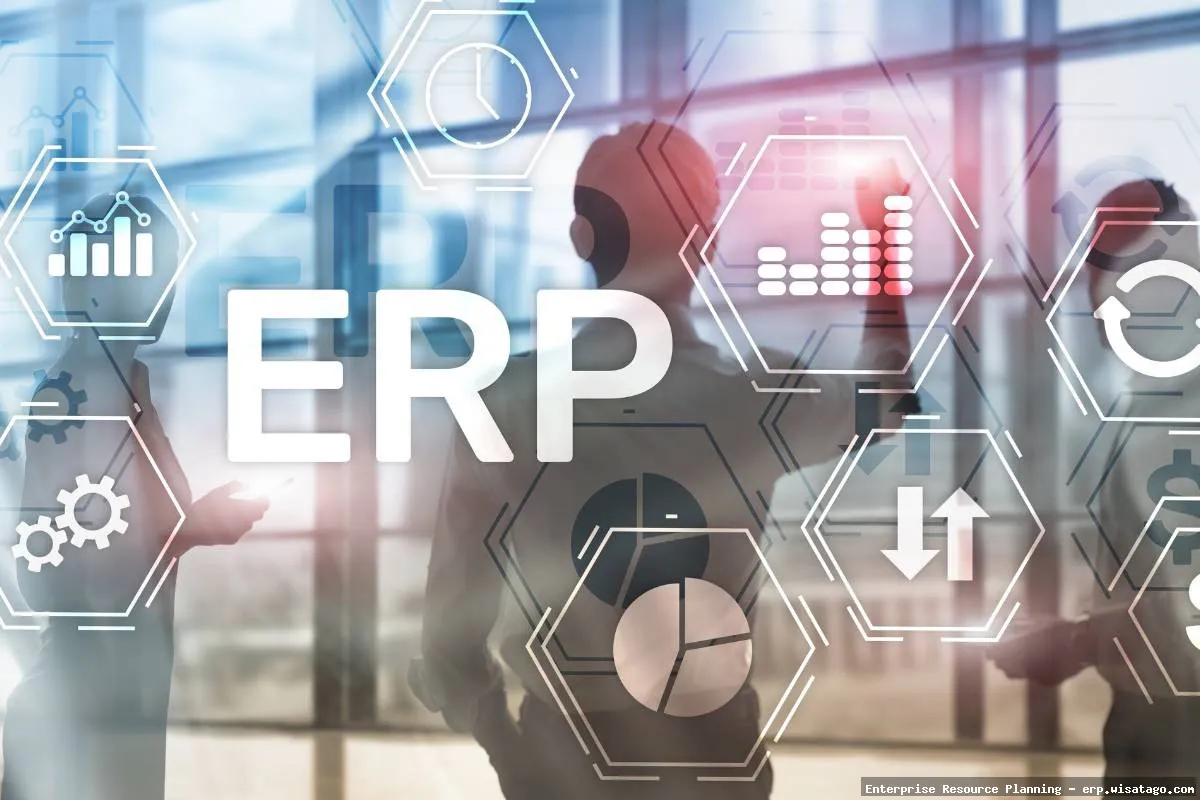High-Availability ERP Architectures For Critical Operations: Complete Guide, Features and Details
Enterprise Resource Planning (ERP) systems have become the backbone of modern businesses, integrating various departments and functions into a unified platform. From managing finances and supply chains to tracking inventory and customer relationships, ERP systems are critical for efficient operations. However, the reliance on these systems also introduces a significant risk: downtime. When an ERP system fails, the consequences can be severe, ranging from lost revenue and disrupted workflows to damaged reputation and regulatory penalties. This is where high-availability ERP architectures come into play, ensuring that your critical operations remain operational even in the face of unexpected events.
Imagine a manufacturing plant suddenly unable to process orders because their ERP system is down. Production grinds to a halt, shipments are delayed, and customers are left waiting. Or consider a retail chain unable to replenish inventory, leading to empty shelves and lost sales. These scenarios highlight the importance of designing ERP systems with high availability in mind. It’s not just about preventing downtime; it’s about building resilience into your business processes and ensuring business continuity.

This article will delve into the world of high-availability ERP architectures, exploring the key components, features, and strategies that businesses can leverage to minimize downtime and maintain uninterrupted operations. We’ll discuss different approaches to achieving high availability, from redundancy and failover mechanisms to disaster recovery planning and cloud-based solutions. Whether you’re planning a new ERP implementation or looking to improve the resilience of your existing system, this guide will provide you with the knowledge and insights you need to make informed decisions and protect your critical operations.
Understanding High Availability in ERP Systems
High availability (HA) in the context of ERP systems refers to the system’s ability to remain operational and accessible for a specified percentage of time, typically expressed as a percentage like 99.99% (four nines) or 99.999% (five nines). This means that the system experiences minimal downtime, ensuring that users can access the system and perform their tasks without interruption. Achieving high availability requires a combination of hardware, software, and architectural design considerations.
Defining Key Terms
Before diving deeper, it’s important to define some key terms:
- Downtime: The period when the ERP system is unavailable to users, preventing them from accessing data and performing tasks.
- Uptime: The period when the ERP system is operational and accessible to users.
- Recovery Time Objective (RTO): The maximum acceptable time to restore the ERP system to full operation after an outage.
- Recovery Point Objective (RPO): The maximum acceptable amount of data loss during an outage.
- Failover: The automatic switching of the ERP system to a redundant system or component in the event of a failure.
- Redundancy: The duplication of critical components or systems to provide backup in case of failure.
Why High Availability is Crucial for Critical Operations
The impact of ERP downtime can be significant, especially for organizations that rely heavily on their ERP system for critical operations. Here are some potential consequences:
- Financial Losses: Downtime can lead to lost revenue, delayed shipments, and missed orders.
- Operational Disruptions: Key business processes, such as manufacturing, supply chain management, and order fulfillment, can be disrupted.
- Reputational Damage: Customers may lose confidence in the organization if they experience delays or disruptions due to ERP downtime.
- Regulatory Compliance Issues: Some industries have strict regulatory requirements for data availability and business continuity.
- Decreased Productivity: Employees are unable to perform their tasks effectively when the ERP system is unavailable.
Architectural Approaches to High Availability
Several architectural approaches can be used to achieve high availability in ERP systems. The best approach depends on the specific requirements of the organization, including the RTO, RPO, and budget.
Clustering
Clustering involves grouping multiple servers together to act as a single system. If one server fails, the other servers in the cluster automatically take over, ensuring continuous operation. This approach provides high availability and scalability.
Replication
Replication involves creating multiple copies of the ERP system’s data and applications on different servers or storage devices. If the primary system fails, the replicated system can take over, minimizing downtime. Replication can be synchronous (data is written to both systems simultaneously) or asynchronous (data is written to the primary system first and then replicated to the secondary system).
Load Balancing
Load balancing distributes traffic across multiple servers to prevent any single server from becoming overloaded. This improves performance and availability by ensuring that no single point of failure exists.
Virtualization
Virtualization allows multiple virtual machines (VMs) to run on a single physical server. This can improve resource utilization and simplify disaster recovery. If a physical server fails, the VMs can be quickly migrated to another server.

Cloud-Based Solutions
Cloud-based ERP solutions offer several advantages in terms of high availability. Cloud providers typically have robust infrastructure and built-in redundancy to ensure that their services are always available. They also offer features such as automatic backups, disaster recovery, and scalability.
Key Components of a High-Availability ERP Architecture
A high-availability ERP architecture typically consists of the following key components:
Redundant Hardware
Redundant hardware includes multiple servers, storage devices, and network components. This ensures that if one component fails, another component can take over, preventing downtime.
Failover Mechanisms
Failover mechanisms automatically switch the ERP system to a redundant system or component in the event of a failure. This can be achieved through clustering, replication, or other techniques.
Data Backup and Recovery
Regular data backups are essential for protecting against data loss in the event of a disaster. Backups should be stored in a secure location, preferably offsite, and should be tested regularly to ensure that they can be restored successfully.
Disaster Recovery Planning
A disaster recovery plan outlines the steps that will be taken to restore the ERP system to full operation in the event of a disaster. This plan should include procedures for data backup and recovery, failover, and communication.
Monitoring and Alerting
Continuous monitoring of the ERP system is essential for detecting potential problems before they cause downtime. Monitoring tools should be configured to send alerts when critical thresholds are exceeded.
Implementing High Availability: Practical Considerations
Assess Your Business Needs
Before implementing a high-availability ERP architecture, it’s crucial to assess your business needs and determine the appropriate level of availability. Consider factors such as the criticality of the ERP system, the potential impact of downtime, and your budget. A thorough business impact analysis (BIA) is highly recommended. For more information, you can refer to ERP as an additional resource.
Choose the Right Architecture
Select the architectural approach that best meets your needs. This may involve a combination of different techniques, such as clustering, replication, and cloud-based solutions.

Invest in Redundant Hardware
Ensure that you have sufficient redundant hardware to support your high-availability architecture. This may include multiple servers, storage devices, and network components.
Implement Robust Failover Mechanisms
Configure failover mechanisms to automatically switch the ERP system to a redundant system or component in the event of a failure.
Develop a Comprehensive Disaster Recovery Plan
Create a detailed disaster recovery plan that outlines the steps that will be taken to restore the ERP system to full operation in the event of a disaster. Test this plan regularly.
Monitor and Maintain Your System
Continuously monitor the ERP system to detect potential problems before they cause downtime. Regularly review and update your high-availability architecture to ensure that it continues to meet your needs.
The Role of Cloud ERP in High Availability
Built-in Redundancy and Scalability
Cloud ERP providers invest heavily in infrastructure redundancy and scalability. This means your ERP system benefits from geographically distributed data centers, automated failover mechanisms, and the ability to scale resources up or down as needed. This inherent infrastructure significantly reduces the risk of downtime compared to on-premise solutions.
Disaster Recovery as a Service (DRaaS)
Many cloud ERP providers offer DRaaS, simplifying disaster recovery planning and execution. This service replicates your ERP environment to a separate location, allowing you to quickly recover from a disaster without significant data loss or downtime.
Reduced IT Burden
By offloading the responsibility for infrastructure management to a cloud provider, your IT team can focus on strategic initiatives rather than spending time on tasks like server maintenance and backups. This allows them to dedicate resources to optimizing the ERP system and improving business processes.
Conclusion
High-availability ERP architectures are essential for organizations that rely on their ERP system for critical operations. By implementing the right architecture and components, businesses can minimize downtime, protect against data loss, and ensure business continuity. While the initial investment in high availability may seem significant, the long-term benefits in terms of reduced downtime, increased productivity, and improved customer satisfaction far outweigh the costs. Carefully consider your business needs, choose the right architecture, and invest in the necessary hardware, software, and services to build a resilient and reliable ERP system that can support your critical operations.
Conclusion
In conclusion, establishing a high-availability (HA) ERP architecture is no longer a luxury but a necessity for organizations relying on critical operations. As this article has demonstrated, the potential consequences of ERP downtime, ranging from financial losses and reputational damage to regulatory non-compliance, are simply too significant to ignore. By carefully considering factors such as RTO and RPO requirements, selecting appropriate HA strategies like clustering, replication, and failover mechanisms, and implementing robust monitoring and testing procedures, businesses can significantly mitigate the risks associated with ERP outages and ensure business continuity.
The path to achieving true high availability requires a holistic approach, encompassing infrastructure, software, and operational best practices. While the initial investment in an HA ERP architecture may seem substantial, the long-term benefits in terms of reduced downtime, improved operational efficiency, and enhanced customer satisfaction far outweigh the costs. We encourage organizations to proactively assess their current ERP architecture and explore the various HA solutions available to them. To delve deeper into specific strategies and technologies, consider downloading our comprehensive whitepaper on “Designing Resilient ERP Systems” available here. Investing in high availability is investing in the future resilience and success of your business.
Frequently Asked Questions (FAQ) about High-Availability ERP Architectures for Critical Operations
What are the key components of a high-availability ERP architecture, and how do they ensure minimal downtime for critical business operations?
A high-availability ERP architecture relies on several key components working in tandem to ensure continuous operation. These include: Redundancy, where critical components like servers, databases, and network devices are duplicated to provide failover in case of primary system failure. Load balancing distributes workloads across multiple servers to prevent overloading any single server and improve response times. Clustering groups multiple servers together to act as a single system, providing automatic failover. Data replication ensures that data is continuously copied between multiple locations, minimizing data loss and downtime in case of a disaster. Finally, proactive monitoring tools constantly monitor the health and performance of the system, allowing administrators to identify and address potential issues before they cause downtime. These components, when properly implemented, ensure minimal downtime and maintain business continuity.
How does implementing a Disaster Recovery (DR) strategy with a high-availability ERP system protect critical business processes from significant data loss during major outages or regional disasters?
Implementing a robust Disaster Recovery (DR) strategy alongside a high-availability ERP system is crucial for safeguarding critical business processes and minimizing data loss during significant outages. The DR plan typically involves creating a secondary site, often geographically distant from the primary site, that mirrors the ERP system’s configuration and data. Regular data backups and replication to the DR site ensure that data is readily available in case of a primary site failure. The DR plan also outlines procedures for failover, including steps for activating the DR site, restoring services, and validating data integrity. Regular testing of the DR plan is essential to ensure its effectiveness and to identify any potential weaknesses. A well-defined and tested DR strategy significantly reduces the risk of data loss and enables a quicker recovery, minimizing disruption to critical business operations.
What are the common challenges when migrating to a high-availability ERP solution, and what strategies can organizations use to overcome these challenges while minimizing disruption to ongoing operations?
Migrating to a high-availability ERP solution presents several challenges. Data migration is a significant hurdle, requiring careful planning and execution to ensure data integrity and consistency. System integration with existing applications can be complex, requiring thorough testing and customization. Performance tuning is critical to optimize the ERP system for high availability and responsiveness. Training is also essential to ensure that users and administrators are proficient in using and maintaining the new system. To overcome these challenges, organizations should adopt a phased approach, starting with a pilot project. Thorough planning and testing are crucial at each stage. Engaging experienced consultants can provide valuable expertise. Finally, clear communication and stakeholder involvement are essential to ensure a smooth transition and minimize disruption to ongoing operations. Proper planning and execution are vital for a successful ERP migration.